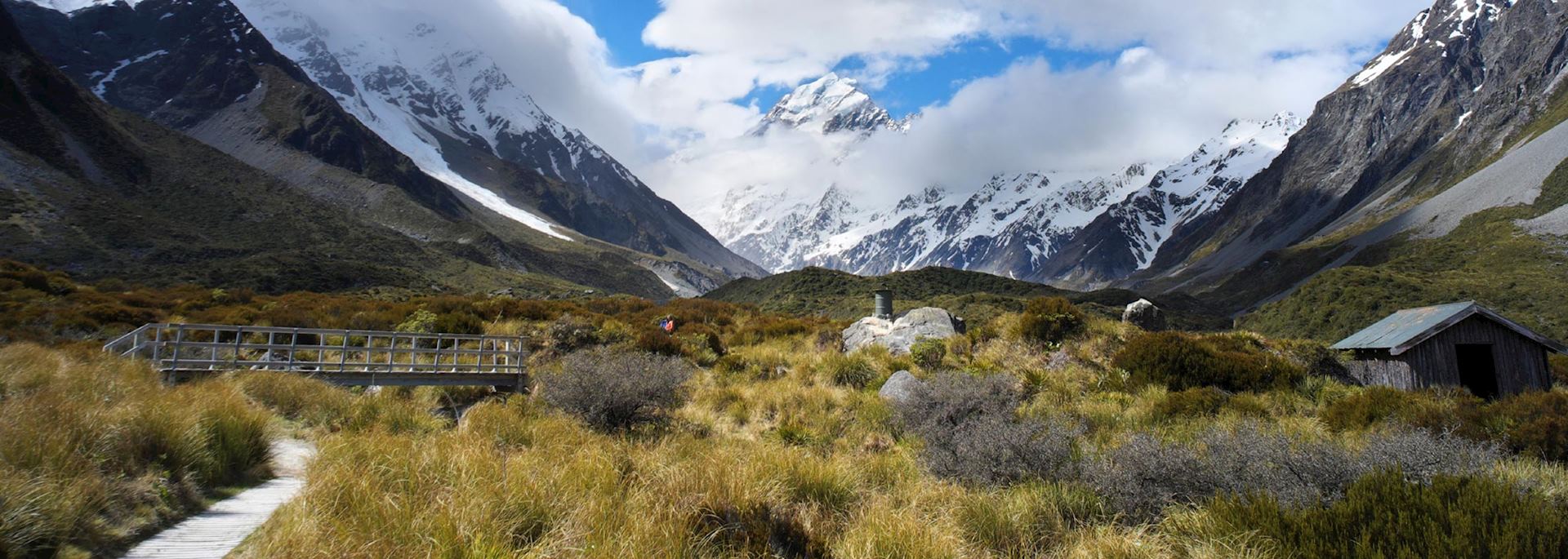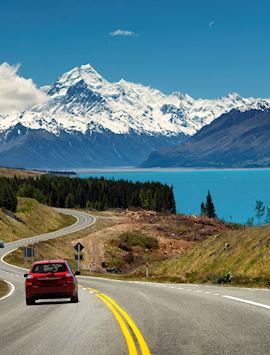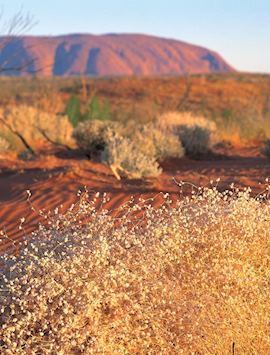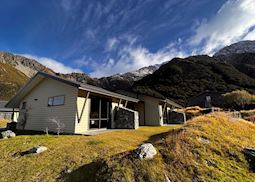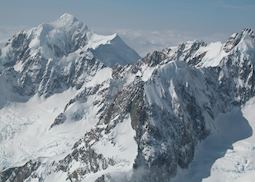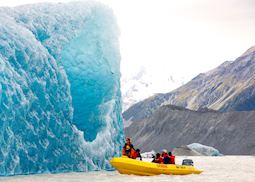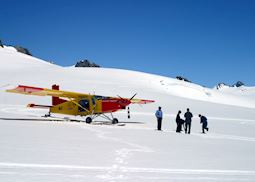Jump to:
Known in Māori as ‘Aoraki’, Mount Cook is the highest mountain in the continent of Australasia. The National Park which surrounds the peak is certainly one of New Zealand’s most spectacular, with more than one third covered in permanent snow and glacial ice.
You can get up as far as Mount Cook village by road, from where air safaris, trekking, 4x4 tours and dinghy cruises set out for the dripping ice faces of advancing glaciers.
Walks and treks
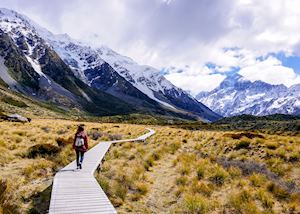 Mount Cook National Park is yet another of New Zealand’s havens for walkers. There are paths here to please gentle day walkers, as well as challenging hikes that require specific mountaineering experience.
Mount Cook National Park is yet another of New Zealand’s havens for walkers. There are paths here to please gentle day walkers, as well as challenging hikes that require specific mountaineering experience.
There are ten short walks leading from Mount Cook Village with two of the most popular being the trail to Kea Point (two hours return) and the walk over the swing bridges and up to the Hooker Valley (four hours return).
Maps and information are available from the Department of Conservation visitors' centre in Mount Cook Village, and in the summer guides can be arranged for the more tricky paths.
who's been there

Start planning your tailor-made trip to Mount Cook National Park by contacting one of our New Zealand specialists
-
01993 838 92501993 838 820
- Make an enquiry
Suggested itineraries featuring Mount Cook National Park
Our itineraries will give you suggestions for what is possible when you travel in Mount Cook National Park, and they showcase routes we know work particularly well. Treat them as inspiration, because your trip will be created uniquely by one of our specialists.
Places near Mount Cook National Park
- Fox & Franz Josef Glaciers 20 miles away
- Lake Tekapo 27 miles away
- South Island 34 miles away
- Twizel 37 miles away
- Lake Wanaka 83 miles away
- Hokitika 83 miles away
- Arthur's Pass National Park 92 miles away
- Arrowtown 105 miles away
- Queenstown 115 miles away
- Glenorchy 115 miles away
- Milford Sound 126 miles away
- Christchurch 128 miles away
- Punakaiki 129 miles away
- Akaroa & Banks Peninsula 144 miles away
- Dunedin 150 miles away
- The Otago Peninsula 150 miles away
- Hanmer Springs 162 miles away
- Te Anau & Manapouri 166 miles away
- Doubtful Sound 187 miles away
- Kaikoura 203 miles away
- The Catlins 204 miles away
- Kahurangi National Park 215 miles away
- Nelson 236 miles away
- Abel Tasman National Park 244 miles away
- Stewart & Ulva Islands 248 miles away
- Blenheim 249 miles away
- Collingwood & Farewell Spit 250 miles away
- Picton 261 miles away
- Marlborough Sounds 271 miles away
- Wellington 293 miles away
Photos of Mount Cook National Park
Accommodation choices for Mount Cook National Park
We've selected a range of accommodation options for when you visit Mount Cook National Park. Our choices usually come recommended for their character, facilities and service or location. Our specialists always aim to suggest properties that match your preferences.
-
![Aoraki Court Motel]()
Aoraki Court Motel
Mount Cook National Park
Ideas for experiencing Mount Cook National Park
Our specialists seek out authentic ways to get to know the places that could feature in your trip. These activities reflect some of the experiences they've most enjoyed while visiting Mount Cook National Park, and which use the best local guides.
-
Sightseeing flight over Mount Cook ![The Grand Traverse of Mount Cook, West Coast]()
Sightseeing flight over Mount Cook
Sightseeing flight over Mount Cook
This unique flight encompasses Aoraki (Mount Cook), Westland and Tai Poutini national parks, traversing 200 kilometres of New Zealand's most beautiful and spectacular alpine scenery.
View details -
Glacier boat cruise ![Glacier cruise, Mount Cook National Park]()
Glacier boat cruise
Glacier boat cruise
This three-hour tour of Lake Tasman, and the front edge of New Zealand's largest glacier, is a unique opportunity to learn about this incredible remnant of the Ice Age.
View details -
Tasman Glacier sightseeing flight ![Franz Josef Glacier, West Coast]()
Tasman Glacier sightseeing flight
Tasman Glacier sightseeing flight
From the foothills of Mount Cook National Park you can take a spectacular scenic ski-plane flight which will take you up the length of the Tasman Glacier before landing on the newly fallen snow near the top.
View details

